Siddhartha Gautama: How The Father of Buddhism Walked From Suffering to Enlightenment
Siddhartha Gautama, also known as the Buddha or “Enlightened One,” is probably one of the most influential individuals to come out of India through the incidental founding of Buddhism. Siddhartha Gautama, in his opposition to the ruling religious establishment and his teachings of compassion and renunciation of worldly wealth, is often compared to Jesus of Nazareth, later called the Christ or “Anointed One.” Siddhartha Gautama and the movement known as Buddhism are similar to Jesus and the Christian movement in the renunciation of rituals and religious hierarchy in favor of a deeper spirituality involving personal responsibility for one’s spiritual condition.
Siddhartha Gautama’s Life Before Buddhism
According to tradition, Siddhartha Gautama was born in Lumbini in modern day Nepal. His parents were of the Shakya clan and members of the ruler/warrior caste. As a result, Siddhartha had a comfortable life in his early years. Buddhist stories accentuate the opulence of his early years living in the palace. According to one legend in Buddhism, his father heard a prophecy that his son would either become a powerful king or the Buddha. Not wanting his son to become the Buddha, he did all he could to keep his son from encountering suffering.
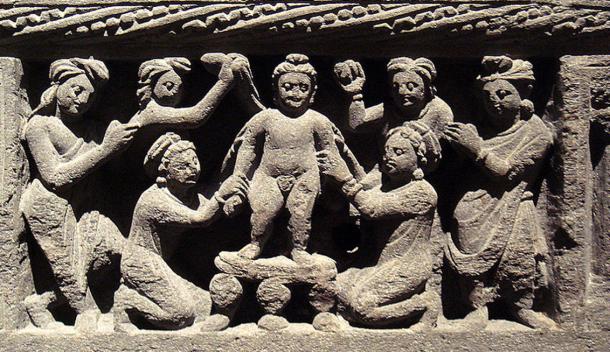
Infant Buddha Taking a Bath Gandhara 2nd Century AD. (CC BY SA 4.0)
This plan worked for a while. Siddhartha enjoyed a palace lifestyle and was married to a woman named Yasodhara. They had a son named Rahula. Rahula, would later become one of Siddhartha’s followers. After Siddhartha reached adulthood, he became more aware of the suffering that was present outside the palace walls. Buddhist legends say he also came to the realization that this sort of suffering could happen to him as well. This, and the suffering of others in the world, caused him great distress and, eventually, he decided that he could not continue living such a luxurious lifestyle when so many others were suffering.
- The Christ And The Buddha: How Can You Explain the Uncanny Similarities?
- Ancient Persian Inscriptions Link a Babylonian King to the Man Who Became Buddha
- Mini Golden Coffin Found in Crypt May Hold Skull Bone of Buddha
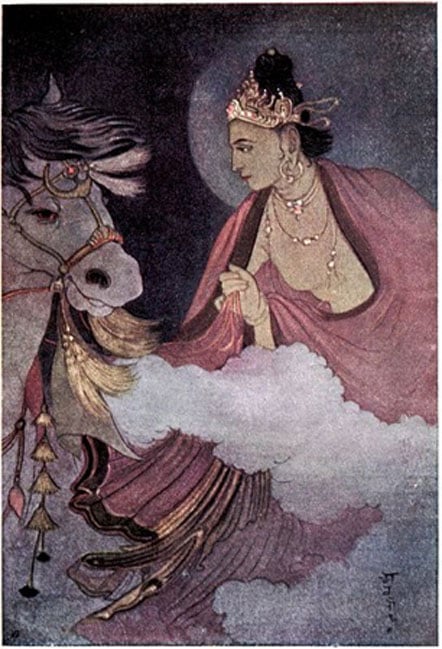
Departure of Prince Siddhartha. (Public Domain)
At a certain age, about 29, Siddhartha left his former life to become a wandering ascetic. Buddhist tradition says that he left in secret, but this is not certain. He joined the Sramanas, wandering ascetics who had formed sects all over India at the time who renounced the world and conventional religion. For years, Siddhartha lived as an ascetic, searching for something, a way to make sense of human suffering. His asceticism was very severe and at one point he almost died. After trying such extreme asceticism, however, he still had not found the answer. Followers of Buddhism believe that he eventually decided that the answer was not to be found in extreme asceticism any more than it was to be found in living an excessively luxurious lifestyle.
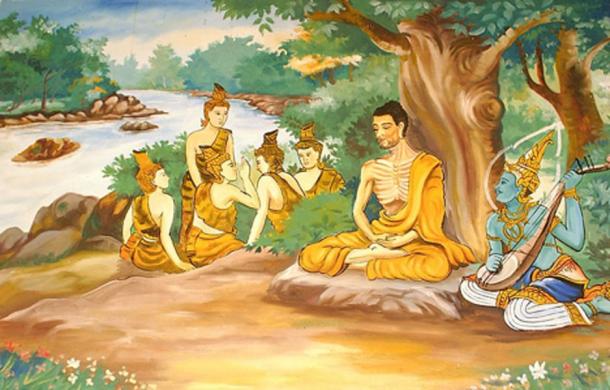
Picture of a wall painting in a Laotian temple, depicting the Bodhisattva Gautama (Buddha-to-be) undertaking extreme ascetic practices before his enlightenment. A god is overseeing his striving, and providing some spiritual protection. The five monks in the background are his future 'five first disciples', after Buddha attained Full Enlightenment. (Public Domain)
The Emergence of Buddhism
According to tradition, Siddhartha was sitting under a fig tree meditating one day when, suddenly, the answer came to him. It is at this point that he attained what Buddhists call Nirvana. At this point, Siddhartha became the Buddha, the Enlightened One. It was shortly afterwards that he gave his first sermon at Sarnath and began to expound on what would later become central to Buddhism today.
The exact answer that Siddhartha found is not entirely clear as even Buddhists today still debate over it. The word nirvana comes from a word meaning “blown out” or “snuffed out.” It gives the idea of extinction or cessation. Many Buddhists today think of it as the cessation of desires. Central to the Buddha’s teachings is the idea that attachment to things led to suffering. Siddhartha realized that things like wealth, good health, and even friends and family would all fade or die away, and that attachment to these things would only make parting with these things more painful and thus lead to suffering. Buddhist tradition says that Siddhartha believed that the solution was to not allow oneself to be attached these things and for all such desires to cease to exist.
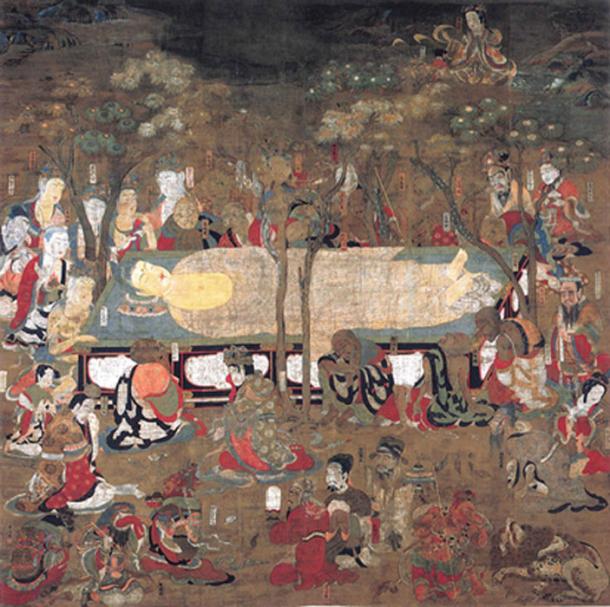
Buddha's Nirvana. Color on silk. Located at Kongōbu-ji, Mt. Kōya, Wakayama, Japan. (Public Domain)
The Core Teachings of Buddhism
Siddhartha removed all the rituals of the dominant Indian religion at the time to get to a fundamental core spiritual truth, albeit a truth about which Buddhists cannot quite come to a consensus. Some believe that the core of Buddhism is compassion for the poor and afflicted. Others believe that it is to break from the cycle of death and rebirth. Others believe that it is simply about living a balanced, moral life free of suffering.
Although many consider these to be an important part of the teachings of Buddhism, they appear in other religious and philosophical traditions on the Indian subcontinent that pre-date Buddhism. One aspect of Buddhism that does appear to be particularly distinctive is humanism. The Buddha was clear that humans were responsible for their actions rather than gods or magic. He also believed that individual humans were responsible for suffering as well as finding a solution to suffering. Buddhist stories always emphasize the actions and motivations of ordinary humans rather than supernatural entities.
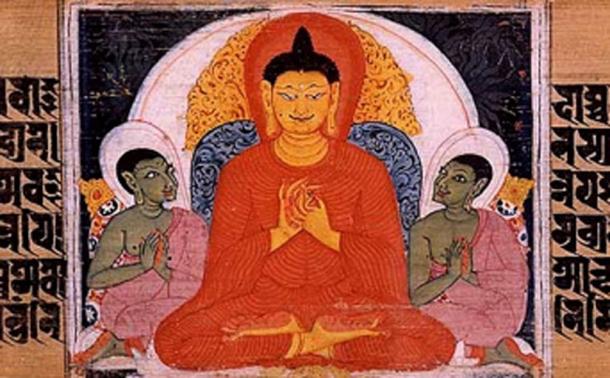
The Buddha teaching the Four Noble Truths. Sanskrit manuscript. Nalanda, Bihar, India. (Public Domain)
Over the centuries, Buddhism has gained a variety of ritual and liturgical traditions as well as supernatural, metaphysical, and cosmological ideas. None of these are, however, really required to be a Buddhist. Siddhartha himself didn’t really consider them to be very important and considered the most important thing to be how one ought to live and how the question of human suffering should be addressed.
Comparing Siddhartha Gautama and Jesus of Nazareth
This is a way in which Siddhartha Gautama and Jesus of Nazareth are similar. Their teachings on compassion and criticism of the existing religious establishment are often compared, but another thing that is distinctive both about the teachings of Siddhartha Gautama and Jesus is how they both broke through religious traditions and rituals to get to the core issues of existence. Siddhartha Gautama believed that the Vedic rituals and religious ceremonies had lost their original meaning and significance. Jesus had similar feelings about the religious practices of the Jewish priests and Pharisees. Although he held the temple cult in reverence, he believed that the priesthood itself had become corrupt and was no longer properly worshiping God. Both seemed more concerned with money and power than spiritual renewal.
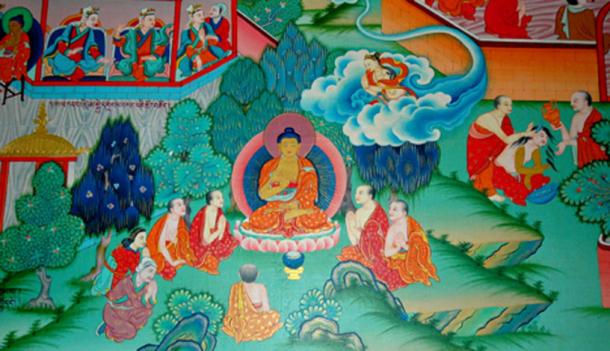
Buddha teaching, from the Buddha's life story, mural, Tharlam Monastery of Tibetan Buddhism, Boudha, Kathmandu, Nepal. (Wonderlane/CC BY 2.0)
In the same way that Siddhartha put aside what he saw as empty rituals and traditions to look for a deeper spiritual truth, though it is not entirely clear what that truth was, Jesus also set aside rituals and tradition which had over time become empty, to reveal a deeper spiritual truth.
- Large, Rare Statue Portraying the Death of Buddha Unearthed at Ancient Bahmala Stupa Site
- 600-Year-Old Buddha Statue Temporarily Emerges from the Waters, Reminding Locals of a Forgotten Past
- The Laughing Buddha: The Eccentric Monk, God of Plenty and Patron of Bartenders
The truth that Jesus had to reveal was of course very different from the truth that Siddhartha had to reveal, but it could be argued that both had to do with personal responsibility for one’s spiritual condition. Although Jesus taught that only God could truly transform a person’s spiritual condition, it was still the responsibility of the person to enter into a personal relationship with God so that the transformation could be possible. Similarly, Siddartha Gautama taught that that it was the responsibility of the individual to accept the four noble truths and live in light of them to obtain a peaceful life free of suffering.
What Jesus and Siddhartha believed the individual needed to take responsibility for was quite different, but they did both emphasize this personal responsibility. This is probably one reason that both Buddhism and Christianity have endured. They both hold the individual responsible for his or her spiritual condition and thus involve the individual in a way that goes beyond simply external aspects such as tradition, ritual, or even political stances to something deeper, something more universal.
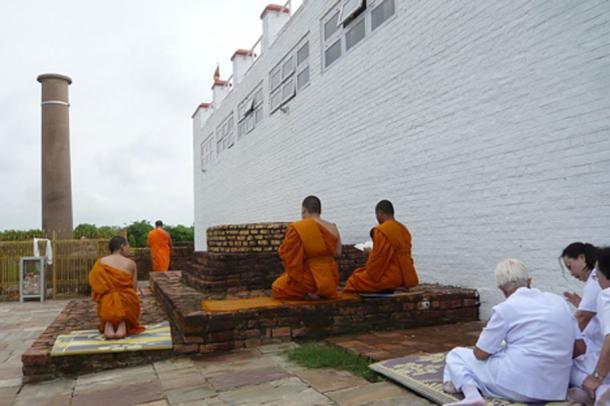
Buddhist monks in Lumbini, the Birthplace of the Lord Buddha. (CC BY SA 3.0)
Top Image: Lord Buddha or Siddhartha Gautama. Source: CC by SA 4.0
By Caleb Strom
References
Conze, Edward, ed. Buddhist scriptures. Vol. 88. Penguin, 1959.


















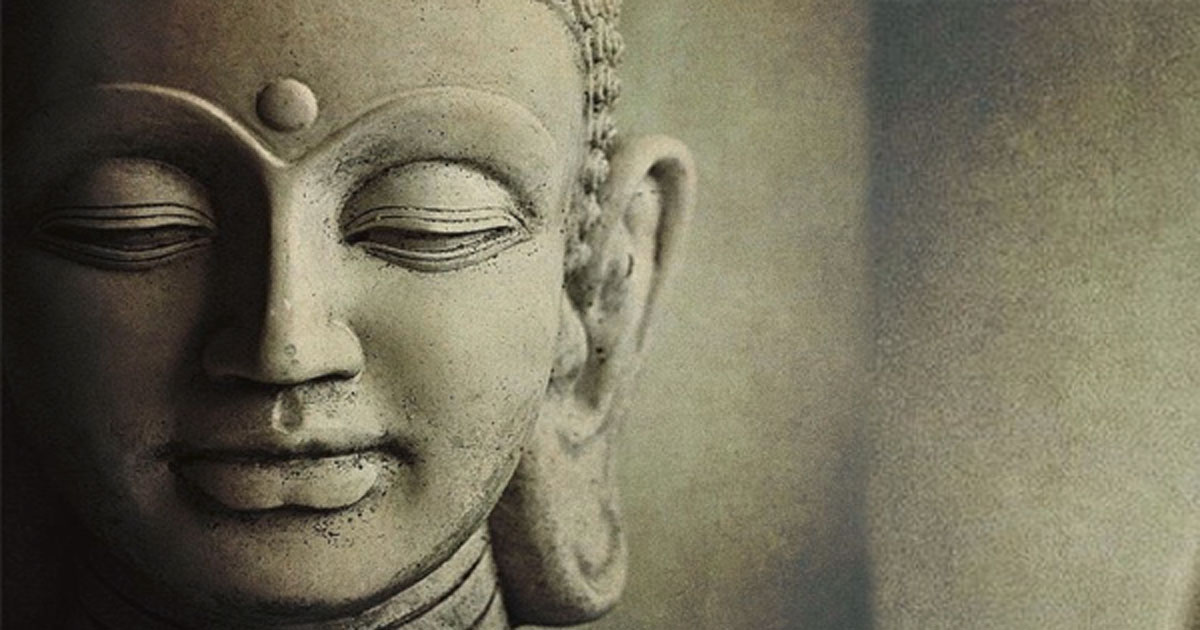

Comments
Buddha was a stoner
He had the best grass in India
His eyes are lit in every depiction of him
Even his true followers today still partake in the sacrament